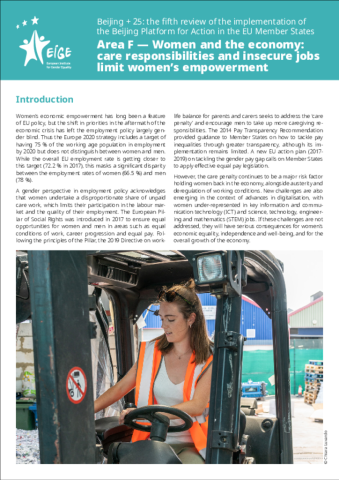Women’s economic empowerment has long been a feature of EU policy, but the shift in priorities in the aftermath of the economic crisis has left the employment policy largely gender blind. Thus the Europe 2020 strategy includes a target of having 75 % of the working age population in employment by 2020 but does not distinguish between women and men. While the overall EU employment rate is getting closer to this target (72.2 % in 2017), this masks a significant disparity between the employment rates of women (66.5 %) and men (78 %).
A gender perspective in employment policy acknowledges that women undertake a disproportionate share of unpaid care work, which limits their participation in the labour market and the quality of their employment. The European Pillar of Social Rights was introduced in 2017 to ensure equal opportunities for women and men in areas such as equal conditions of work, career progression and equal pay.
